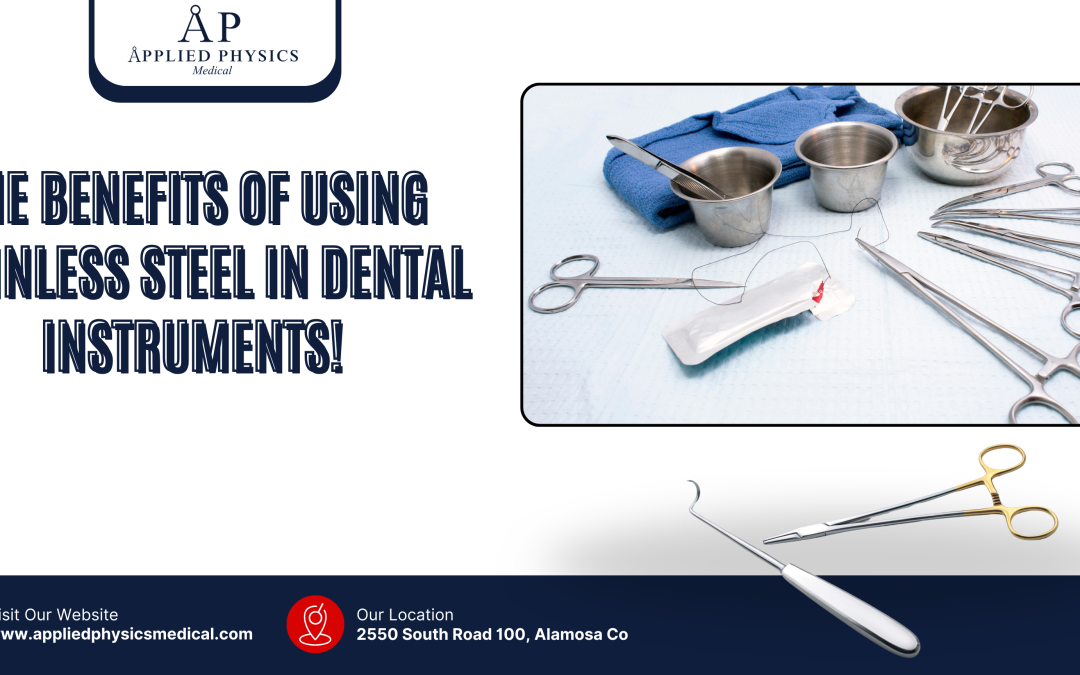Introduction
Stainless steel is widely favored in the dental industry for its exceptional durability and longevity. Dental instruments are subjected to rigorous use and sterilization processes, and stainless steel is renowned for its ability to withstand these harsh conditions without compromising its structural integrity. The alloy’s resistance to wear and tear ensures that dental instruments maintain their functionality over an extended period, reducing the frequency of replacements and ultimately saving costs for dental practices.
This durability also contributes to the overall safety of dental procedures, as it minimizes the risk of instrument breakage during use. Moreover, stainless steel’s robust nature makes it particularly suitable for withstanding the mechanical stresses and strains encountered during dental procedures. Whether it’s a scalpel, forceps, or a dental mirror, stainless steel instruments are designed to endure the demands of various dental applications, ensuring that they consistently deliver optimal performance.
This reliability is crucial for maintaining high standards of patient care and achieving successful treatment outcomes.
Key Takeaways
- Stainless steel dental instruments are durable and long-lasting, making them a reliable choice for dental professionals.
- They offer excellent corrosion resistance, ensuring that the instruments remain in good condition even after repeated use and sterilization.
- Stainless steel instruments are easy to sterilize and maintain, reducing the risk of contamination and ensuring patient safety.
- The material allows for precision and accuracy in dental procedures, leading to better outcomes for patients.
- Stainless steel instruments are cost-effective, offering a high level of performance and longevity for a reasonable price.
Corrosion Resistance
Protection from Corrosive Agents
Dental instruments are frequently exposed to corrosive agents such as saliva, blood, and chemical disinfectants. However, stainless steel’s inherent resistance to corrosion ensures that these instruments remain unaffected by such exposure, preserving their structural integrity and preventing the formation of rust or other forms of degradation.
Maintaining Hygiene and Safety
The corrosion resistance of stainless steel is essential for maintaining the hygiene and safety of dental procedures. It prevents the potential contamination of oral tissues with rust particles or other harmful substances, ensuring a safe and healthy environment for patients.
Longevity and Reliability
Furthermore, stainless steel’s corrosion resistance contributes to the longevity of dental instruments, protecting them from the detrimental effects of environmental factors. This characteristic is particularly advantageous in dental settings where instruments are routinely sterilized and disinfected, ensuring that the instruments remain in optimal condition despite repeated exposure to harsh chemical agents.
Enhancing Reliability and Safety
Ultimately, the corrosion resistance of stainless steel enhances the reliability and safety of dental instruments, making it an indispensable material in the field of dentistry.
Easy Sterilization and Maintenance
Stainless steel’s smooth, non-porous surface makes it exceptionally easy to sterilize and maintain, which is crucial for ensuring the hygiene and safety of dental instruments. The non-reactive nature of stainless steel allows for thorough cleaning and sterilization processes without the risk of degradation or contamination. This ease of sterilization is essential for preventing the transmission of infectious diseases and maintaining aseptic conditions during dental procedures.
Additionally, stainless steel’s resistance to staining and discoloration simplifies the maintenance of dental instruments, ensuring that they retain their aesthetic appeal and functionality over time. The ability to withstand repeated sterilization cycles without deteriorating or losing their luster makes stainless steel instruments a practical choice for dental professionals seeking reliable and low-maintenance tools for their practice. Overall, the ease of sterilization and maintenance offered by stainless steel contributes to the efficiency and effectiveness of dental procedures while upholding stringent standards of infection control.
Precision and Accuracy
| Metrics | Definition |
|---|---|
| Precision | The measure of the exactness or quality of a result, indicating how many selected items are relevant |
| Accuracy | The measure of how close a result comes to the true value, indicating the correctness of a result |
Stainless steel’s inherent strength and stability make it an ideal material for manufacturing precision dental instruments that require intricate designs and fine details. Whether it’s a delicate probe or a complex surgical instrument, stainless steel’s ability to maintain dimensional stability and resist deformation ensures that dental instruments retain their precise shape and functionality throughout their lifespan. This characteristic is crucial for achieving accurate and consistent results in various dental procedures, as it allows practitioners to rely on the performance and reliability of their instruments without compromise.
Furthermore, stainless steel’s machinability enables the production of finely crafted dental instruments with sharp edges, fine points, and intricate patterns, facilitating precise manipulation and control during dental procedures. The material’s compatibility with advanced manufacturing techniques also allows for the creation of custom-designed instruments tailored to specific clinical needs, further enhancing the precision and accuracy of dental treatments. Ultimately, stainless steel’s contribution to precision and accuracy in dental instruments underscores its significance in supporting the delivery of high-quality dental care.
Cost-effectiveness
Stainless steel’s exceptional durability, longevity, and resistance to corrosion make it a cost-effective choice for dental instruments. The material’s ability to withstand repeated use and sterilization processes reduces the frequency of instrument replacements, resulting in long-term cost savings for dental practices. Additionally, stainless steel’s resistance to corrosion minimizes the need for extensive maintenance or repairs, further contributing to its cost-effectiveness over time.
Moreover, the widespread availability of stainless steel as a raw material ensures competitive pricing for dental instruments manufactured from this alloy. Its affordability relative to other materials makes stainless steel an attractive option for practitioners seeking high-quality instruments without incurring excessive expenses. The cost-effectiveness of stainless steel aligns with the economic considerations of dental practices while offering reliable performance and durability, making it a practical choice for outfitting dental facilities with essential instruments.
Versatility in Dental Procedures
Diverse Applications in Dental Care
From routine examinations to complex oral surgeries, stainless steel instruments play a crucial role in supporting diverse aspects of dental care. The material’s adaptability to different clinical requirements underscores its versatility in addressing the multifaceted needs of dental practitioners across different specialties.
Compatibility with Advanced Sterilization Methods
Furthermore, stainless steel’s compatibility with advanced sterilization methods such as autoclaving enables its use in a broad spectrum of dental settings, including general dentistry offices, orthodontic clinics, periodontal practices, and oral surgery centers.
A Fundamental Material in Modern Dentistry
This versatility allows practitioners to rely on stainless steel instruments for a wide array of procedures while ensuring consistent performance and reliability across various clinical scenarios. The adaptability of stainless steel in meeting the demands of diverse dental treatments reinforces its status as a fundamental material in modern dentistry.
Environmental Sustainability
Stainless steel’s recyclability and long service life contribute to its environmental sustainability as a material for dental instruments. The alloy’s recyclable nature aligns with sustainable practices by minimizing waste generation and reducing the reliance on virgin resources for instrument production. By promoting the reuse and recycling of stainless steel components, dental practices can contribute to environmental conservation efforts while maintaining high standards of clinical care.
Additionally, stainless steel’s durability and longevity reduce the environmental impact associated with frequent replacements or disposals of dental instruments. The extended service life of stainless steel instruments minimizes resource consumption and waste generation, making it an environmentally responsible choice for dental professionals seeking to minimize their ecological footprint. The material’s ability to support sustainable practices while upholding the quality and safety of dental care underscores its significance in promoting environmental stewardship within the healthcare industry.
Conclusion
The utilization of stainless steel in dental instruments offers a multitude of benefits that encompass durability, corrosion resistance, ease of sterilization and maintenance, precision and accuracy, cost-effectiveness, versatility in dental procedures, and environmental sustainability. These advantages collectively underscore the pivotal role of stainless steel as a foundational material in supporting high-quality clinical care while upholding stringent standards of safety, reliability, and environmental responsibility within the field of dentistry.


